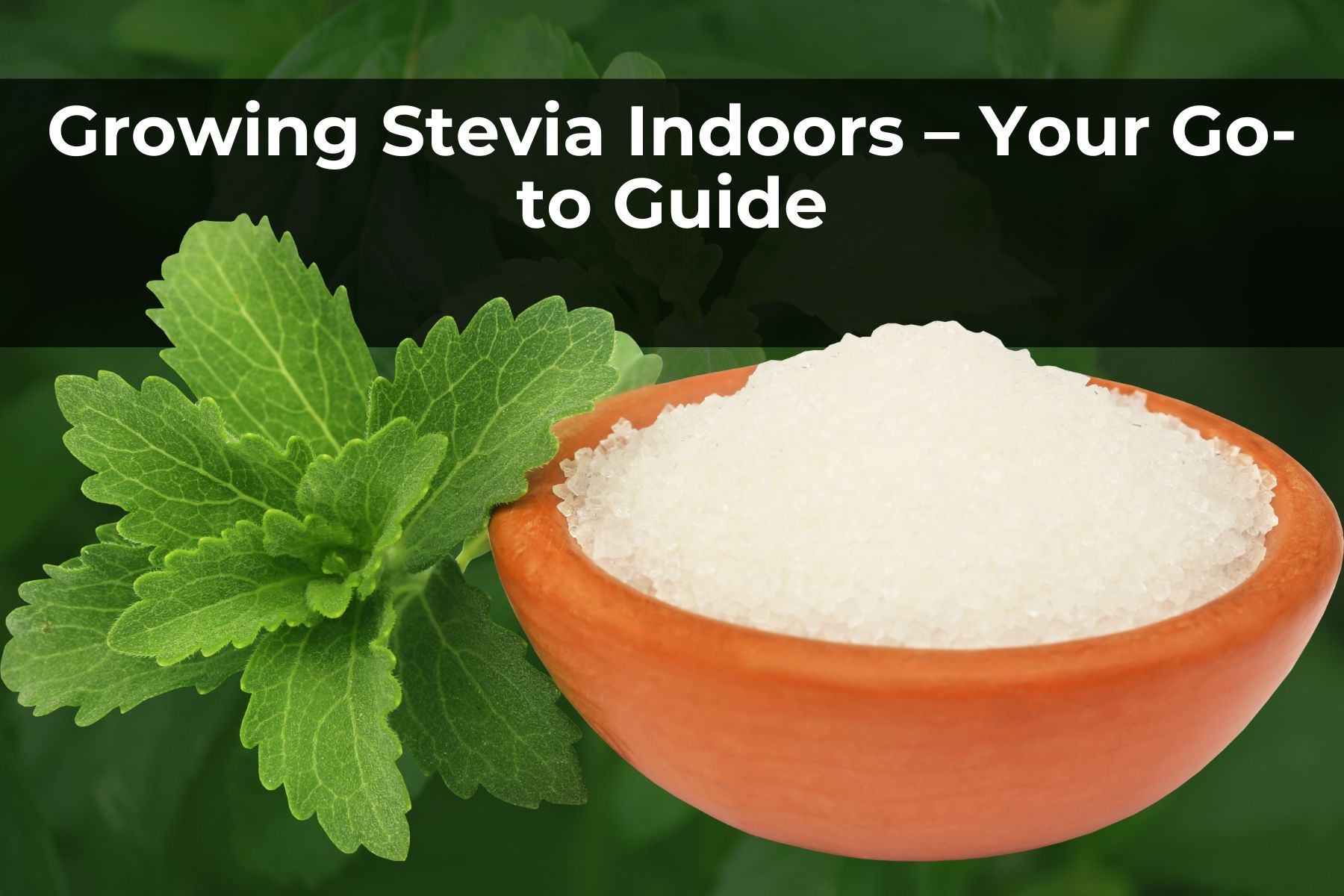Last Updated on April 15, 2024 by Real Men Sow
Stevia (Stevia Rebaudiana), has become a well-known natural sweetener. It is a perennial tender herb that can be grown outdoors in winter. It cannot survive in areas where there is snow or frost. Growing stevia indoors is possible to ensure a steady supply of the herb throughout the year. Stem cuttings and air-layering are the best methods of propagating plants, but they can also be grown from seeds. They require at least 8 hours sunlight per day, high temperatures over 70 degrees, and regular harvesting.
What You’ll Need To Grow Stevia Indoors
Containers
You can choose to grow stevia plants in either clay or plastic pots, depending on your preference. To allow water to drain freely, ensure the container is strong and sturdy. One plant can be grown in a 12-inch pot.
Growing Media
You can fill your containers with either coconut coir or commercial potting mixes. They are both lightweight and very water-holding. The potting soils are not made from soil, but a mixture of peat moss, coconut coir or pine bark, vermiculite and perlite. Coconut coir is made from the brown and/or white fibers between the coconut shell and its outer coating.
Stevia plants can be either started from seeds, or propagated by cuttings and layering. Stevia seeds can be difficult to germinate for some gardeners. They prefer to buy starter plants at a local nursery or propagate them from seed.
Stem Cuttings
Take a 4-inch section of the stem from the plant and remove the leaves from the 2-inch base. Dip the stem at the end that has been cut in liquid or powdered rooting hormone.
Place the cut in moist sand or perlite. After three to four weeks, transplant the cut into a container filled with potting soil.
Air Layering
Gently bend a branch or long stem from a mature tree towards the potting soil.
Use small metal stakes or wire to secure the stem at the top. The top 3-4 inches should be left open for growth.
After roots have formed from the nodes in the potting soil and are ready to transplant, remove the stem from your main plant and place it in a separate container.
Start Growing Stevia Indoors From Seeds
Make sure your preferred growing media is dampened before filling containers. Place seeds 1/4″ deep and cover them gently with the growing substrate. Place the container(s), where the ambient temperature is at least 70 degrees.
The soil should be kept moist, but not waterlogged. Because of the overabundance in water within the pores, saturated soils lack oxygen. Thin seedlings when they reach 2 to 3 inches tall. This will allow you to keep the best-looking plants in each pot.
General Care Guide for Growing Stevia Indoors
Sunlight
Stevia plants can be grown outdoors in full sun, where they get at least 6-8 hours of direct sunlight per day. They need at least 6 hours of sunlight from a south-facing or west-facing window to grow indoors. However, they do best when they have sun exposure for 8 to 10 hours.
South-facing windows are the best for indoor plants because they have the most light and allow the most sunlight through. Although they receive sunlight throughout the day, westward-facing windows often get afternoon shade during the hottest and most intense times of the day. They are a great choice if you have plants that are susceptible to being sun-scalded.
A growing light is a great option for indoor plants that don’t get enough sunlight. This helps keep plants from getting too tall and leggy. It also drives photosynthesis, in the leaves. This is the process by which plants convert carbon dioxide and/or water into sugar that can be used as food.
Temperature
Stevia thrives indoors, where it was grown in South America. Keep the daytime temperature at 85 degrees and avoid lowering the nighttime temperature below 50F. Plant growth may slow down or stop completely at these extremes due to internal stress in the plant tissues.
Harvesting
Regular harvesting of stevia leaves is beneficial for overall plant health, just like other herbs. The tips of the stems can encourage lateral growth. This will result in the plant becoming bushier and more fuller. Be sure to not prune more than one third of the plant at a time.
For the best flavor, harvest leaves early in the morning. Use sharp, sterilized scissors, or your fingers, to remove any stems above the node that holds a pair of leaflets. Do not leave any stems on the plant.
Basil leaves should be harvested before they flower to get the best flavor. Take out the flowers if they bloom and wait a few days before harvesting.
Storing
Lay the leaves on a single layer of dehydrator trays to dry them. Leaves should be dried at the recommended temperature for about 30 minutes to dry. Make a bunch of 6 inch long stems by stringing them together. The bunch should be placed in a small bag made of paper with holes. Hang the bag in a dry and warm place.


